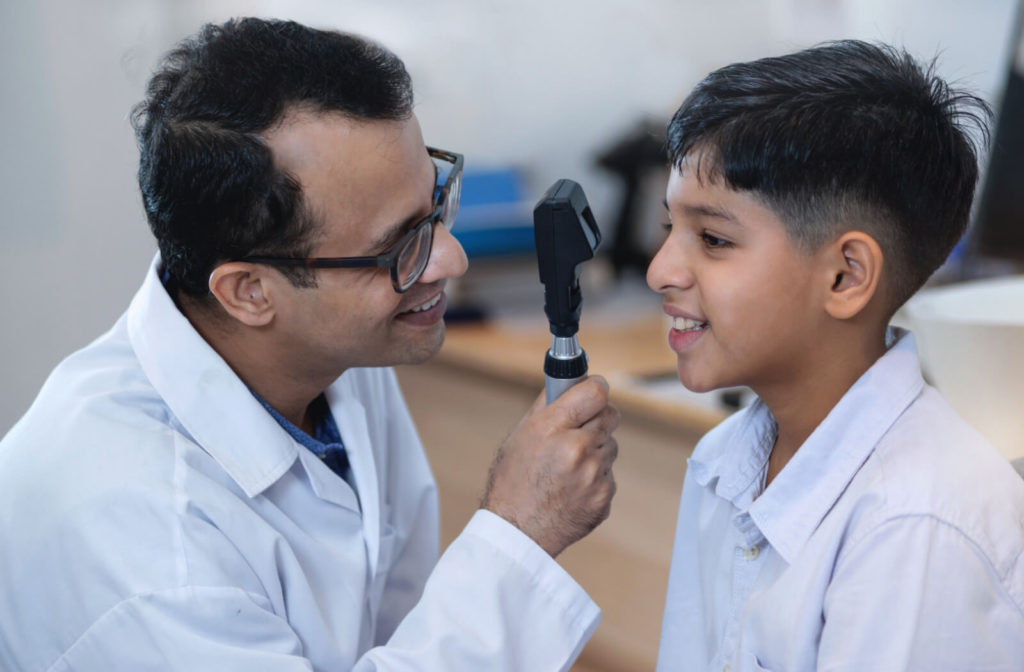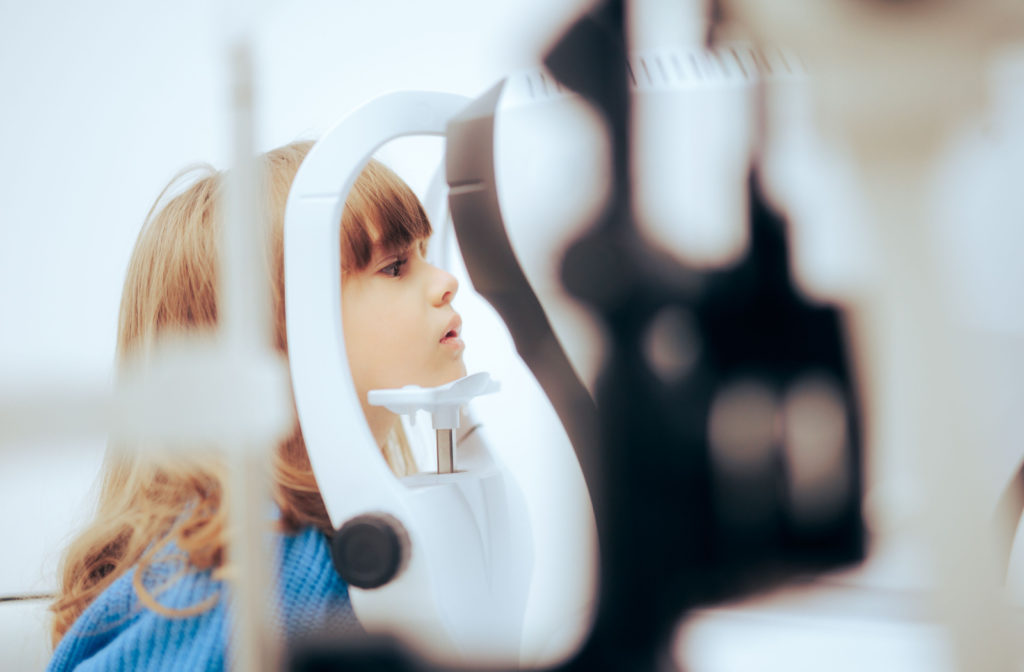Myopia is a common refractive error that cannot always be prevented and often develops in children or youth. Myopia control involves the use of treatments and techniques created to help, slow, or stop myopia progression and preserve individual vision. Various methods are available for myopia control, such as atropine eye drops, orthokeratology, multifocal contact lenses, and specialty prescription eyeglasses.
The type of control or correction methods recommended by optometrists vary, as other factors like eye health and vision needs can affect which method offers the most support. Your child’s eye doctor can offer advice on myopia control based on a comprehensive eye examination.
What Is Myopia?
Myopia, also known as nearsightedness, is a common eye condition where objects in the distance appear blurry while nearby objects remain clear. It develops when your eye is too long or your cornea is too curved.
When you have myopia, light that enters your eye is focused in front of your retina instead of on it, resulting in blurred vision at a distance and clear vision up close. Myopia can often worsen as a person gets older, but there are also other factors that affect myopia development and progression.
In many cases, myopia is hereditary and can run in families. It can also be connected to environmental factors, such as reading in low light or spending too much time on screens.
What Are the Symptoms of Myopia?
One of the most common symptoms of myopia is having difficulty seeing objects at a distance, such as street signs or whiteboards in classrooms. Other symptoms can include:
- Squinting
- Headaches
- eye strain
- Feeling fatigued when driving or doing other activities that require visual focus
Some child-specific signs of myopia include:
- Poor school performance
- Shorter attention spans
- Holding objects close to their face
- Difficulty playing sports
- Sitting too close to the TV
What Is Myopia Control?
Myopia control is a treatment technique that aims to reduce the progression of nearsightedness for children and adolescents. It involves various methods, such as specialty eyewear, contact lenses, and atropine eye drops.
The goal of myopia control is to target the underlying cause of myopia progression: the elongation of the eyeball. By slowing down the growth of the eyeball, myopia control can help prevent the progression of nearsightedness and reduce children’s risk of developing other eye conditions in the future.
Myopia Control Methods
There isn’t a particular best method for myopia control because it ultimately depends on individual eye health, vision needs, lifestyles, and severity of the refractive error. However, there are several options your eye doctor may recommend.
Atropine Eye Drops
Atropine is a type of medication used to dilate the pupils of the eyes. When used in low doses, atropine eye drops can slow the progression of myopia by up to 50%. They are usually administered once a day, and the effects can last for two years or longer. Atropine eye drops are considered safe and effective for children as young as 6 years old.
Orthokeratology (Ortho-K)
Ortho-k is a nonsurgical treatment that involves wearing custom-made rigid contact lenses overnight. These special lenses can reshape your cornea while you sleep, helping you see clearly during the day without the need for glasses or contacts.
Ortho-k lenses have been found to slow the progression of myopia in children and adolescents. The results can be temporary though, and it’s often necessary to continue wearing the lenses every night for optimal results.
Multifocal Contact Lenses
Multifocal contact lenses are a type of soft contact lens that corrects vision at varying distances. They are designed to reduce eye strain and improve visual acuity in patients with myopia. Some specialty multifocal contact lenses have been found to slow the progression of myopia in children and adolescents when worn for 3 years, and research is continuing to find the right length of treatment.
Specialty Prescription Eyeglasses
Some prescription eyeglasses can also be an effective method for myopia control for a child who can’t or doesn’t want to wear contact lenses or ortho-k lenses. Single-vision, bifocal, progressive, and peripheral defocus lenses are all potential prescription lens solutions for myopia. The effective option can vary based on your child’s particular needs.

Discuss Your Child’s Symptoms with an Eye Doctor
The problem with myopia is far more than simply not being able to see things clearly at a distance. Myopia can lead to further complications, like macular degeneration, glaucoma, and cataracts, if it progresses into high myopia. Fortunately, nearsightedness can often be treated with great success. But early detection is important, so it’s crucial to get regular exams as recommended by your eye doctor.
Find a location to visit us at Total Vision today. Our team is happy to connect you with one of our experienced eye doctors throughout California.



